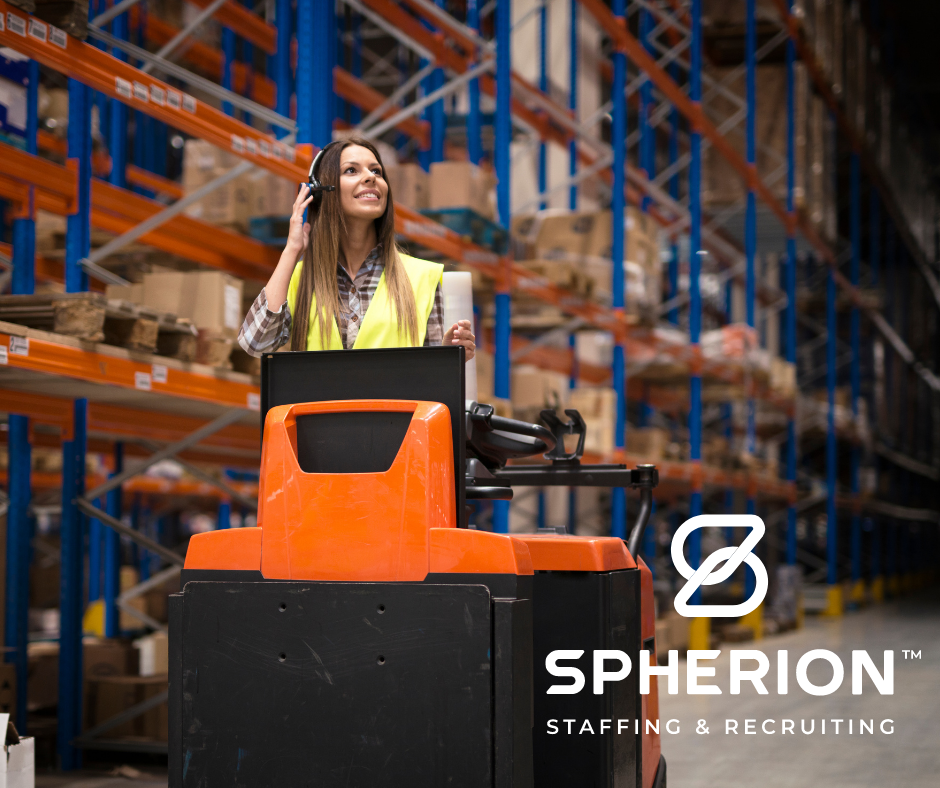With a $30,000+ annual pay and projected job growth of 7% over the next 10 years, warehouse associate jobs are stable, rewarding, and readily available across the country. Whether you live in a big city, a small town, or a rural area, there’s almost certainly a warehouse hiring in your area. Interested in learning more about how to become a warehouse associate? Let’s take a look.
What types of tasks do warehouse associates perform?
A warehouse associate works in a warehouse performing general labor as orders are shipped and received. Warehouse workers are responsible for a variety of tasks involved in preparing and receiving orders, as well as moving, stocking, scanning, and recording product inventories.
When items are preparing to be shipped, warehouse workers will pull, prepare, and pack orders. When deliveries arrive, workers then accept the shipment, ensure it’s accurate, and unload stock. Once stock is unloaded, workers scan and process stock products and perform inventory controls.
When they’re not actively transporting, loading, or unloading goods, workers check to make sure work areas are kept clean to ensure everyone’s safety. They also perform basic maintenance on warehouse equipment.
As a warehouse associate, you won’t be the only person working in a warehouse. You’ll be working alongside a warehouse manager, forklift operators, order pullers, logistics specialists, and any number of other positions to ensure that orders get out on time.
The size of the warehouse and the size of the orders that are being shipped and received can dictate some of what a worker does; a warehouse associate in larger warehouses may need to be able to walk longer distances or operate machinery to help with loading, unloading, and transporting goods.
What types of equipment do warehouse associates use?
Warehouse associates rely on a number of different types of equipment depending on the size of the warehouse, the size and weight of the goods being shipped or unloaded, and the worker’s skills or certification. In a large warehouse where pallets of goods need to be moved, a certified warehouse associate may use a forklift to transport materials and load or unload shipments. In a smaller warehouse with lighter goods, workers will most likely use carts, dollies, or handtrucks.
Even if you haven’t worked in a warehouse before, you’re likely familiar with this equipment already. Most of us have seen forklift operators move heavy goods at stores like Home Depot. And if you’ve moved furniture or boxes from one home to another, you’ve probably used a dolly or hand truck. Those with parcel delivery experience or retail experience in big box stores will also be familiar with the light industrial equipment that is commonly used by warehouse workers.
What is the typical schedule for a warehouse associate?
Schedules vary for warehouse workers, but most associates work shifts full-time or 40 hours a week. The actual hours worked will depend on the company the associate works for, but they are typically assigned first, second, or third shift.
Many warehouses are open late at night, early in the morning, or even around the clock. Goods are shipped over long distances—from across the country or across the globe—and shipments can arrive at or depart from the warehouse at unusual hours. Consequently, some warehouse associates can expect to work overnight shifts on an occasional or regular basis. The exact schedule will depend on when shipments are scheduled to arrive or depart, as well as the size and number of shipments expected.
What kind of environment do warehouse associates work in?
In addition to working in a warehouse, warehouse associates can also work in production plants or other light industrial work environments. The exact nature of the work environment will depend on the employer.
Some warehouses are smaller and owned by family-run companies. Meanwhile, those working in Home Depot warehouse jobs or Amazon warehouse jobs, for instance, will be working in a massive warehouse.
In most cases, you can expect the warehouse to be at about room temperature. However, some warehouses may differ in terms of temperature. Some goods may require the warehouse to be cooler than room temperature, or you may need to regularly walk into cold storage, such as a fridge or freezer. Warehouses that store very large goods may have large loading bays that let plenty of air in, leading the inside to become cool in winter months and warmer in summer months.
What types of skills do warehouse associates need?
Because warehouse jobs are manual labor, warehouse workers must be able to stand and walk for eight to 10 hours at a time. They must be able to lift up to 50 lbs and be able to push, pull, squat, bend, and reach for different products throughout the day. In addition, products may be stocked on high shelving, so workers should be comfortable working at different heights.
Warehouse associates work on teams in fast-paced environments, so good interpersonal skills are critical. Being able to communicate clearly means you’ll help the team complete a day’s work efficiently, while good listening skills are important for following instructions from supervisors.
Good organizational skills and attention to detail are also helpful to have as warehouse associates. You’ll need to pack orders accurately, check shipments for defects, and follow schedules for arriving and departing shipments.
Finally, basic math skills are beneficial for a warehouse associate. You’ll need to verify that incoming shipments match purchase orders, as well as count inventory. Occasionally, you may need to use basic computer skills to update inventory or print labels for a shipment.
What are the educational requirements for a warehouse associate?
In most instances, there are no formal educational requirements for warehouse associate jobs. However, some companies may ask for a high school diploma or GED.
While almost never required, it may be helpful to have certain certifications when applying to be a warehouse worker. Lacking a certification won’t cost you a new job, but it may put you at an advantage when an employer is deciding between candidates. Having a forklift driving certification, for example, can give you an advantage in hiring. Some other common certifications include Certified Professional in Distribution and Warehousing; Certified in Production and Inventory Management; and Certified Supply Chain Professional.
Outside of formal education, you may want to position some of your previous experience as hands-on education that has prepared you for a warehouse associate job. Parcel delivery, customer service, and sales are all positions that provide transferable skills for a warehouse job.
What is the career outlook for warehouse associates?
Overall employment for warehouse workers and other manual laborers is projected to grow 7% from 2020 to 2030. This growth rate keeps pace with many other sectors and accounts for the workers who will soon retire or move out of a warehouse position and into a new role. That means that approximately 941,100 openings for warehouse workers are expected to open up within the next decade, making demand for warehouse workers stable.
A warehouse associate position can be a great first step toward future positions like warehouse manager or logistics specialists. They are also valuable ways to gain experience and build connections within a company. Working as a warehouse associate for a company like Walmart may open doors for you in complementary departments, like sales, customer service or operations, down the road.
What is the best way to find a job as a warehouse associate?
Spherion has been connecting job seekers to light industrial opportunities for more than 70 years, so we know warehouse jobs inside and out. Wherever you’re based across the country, we can put you in contact with companies hiring for warehouse workers right now.






